Do you have a question about the Viessmann vitotronic 200-h and is the answer not in the manual?
Essential guidelines for safe installation, warranty adherence, and proper usage of the heating system.
Instructions on reading and storing all applicable documentation for future reference.
Guidance for heating contractors to familiarize owners with system operation and safety.
Information on warranty voidance due to non-compliance with documentation.
Requirement for installation, adjustment, service, and maintenance by licensed professionals.
Indicates a hazardous situation that could result in substantial damage, injury, or loss of life.
Indicates a hazardous situation that could result in minor injury or damage.
Details on commissioning and matching the control unit to local conditions and user instruction.
Information on factory default settings for heating and DHW, including specific time schedules.
Overview of the control unit interface, including the programming unit and operating controls.
Instructions on how to open the control unit to access the programming unit behind the flap.
Explanation of the programming unit's functions, including the 'Help' menu.
Guide to accessing a short guide for controls and heating circuit selection.
Explanation of the two control levels: Standard menu and Extended menu.
How to access and use the standard menu for frequently used settings like room temperature and heating program.
Explanation of various symbols that appear on the display, indicating system status and programs.
How to access the extended menu for less frequently used functions and settings.
Step-by-step guide on navigating menus and making settings using the control buttons.
Step-by-step guide for powering on the control unit and initiating the heating system.
Procedures for safely shutting down the heating circuit control unit with or without frost protection.
Explanation of the automatic pump exercise function to prevent seizing.
Instructions on how to exit the 'Standby mode' by selecting another heating program.
Steps for complete shutdown, including isolating power and protecting against frost.
Checklist of essential settings before enabling central heating, including circuit, temperature, and program.
Guide on selecting and naming individual heating circuits for system configuration.
Instructions for setting standard and reduced room temperatures for heating circuits.
How to configure the heating program, including default settings and options for different heating circuits.
Detailed steps for setting time phases for central heating on a daily or weekly basis.
Explanation of how to adjust the heating curve's slope and shift for optimal heating characteristics.
Methods to stop central heating using the standard or extended menu, selecting 'Only DHW' or 'Standby mode'.
How to temporarily adjust room temperature for guests without altering existing control settings.
Steps to reduce room temperature in standard heating mode to save energy for short absences.
How to activate the 'Holiday program' for energy savings during extended absences, affecting heating and DHW.
Checklist for essential DHW heating settings: temperature, heating program, and time program.
Procedure for setting the desired domestic hot water (DHW) temperature via the extended menu.
How to configure the heating program for DHW, choosing between 'Heating and DHW' or 'Only DHW'.
Instructions for setting individual time phases for DHW heating or using the automatic mode.
How to disable time-controlled DHW heating and potentially use 'Party mode' for continuous heating.
Methods to stop DHW heating, either completely or while maintaining room heating.
Instructions for adjusting the display contrast for better legibility of menu text.
How to adjust the brightness of the control unit's display and screen saver.
Procedure to assign custom names to heating circuits (HC1, HC2, HC3) for easier identification.
How to select which heating circuit is displayed by default in the standard menu.
Steps to change the display language of the control unit's interface.
Instructions for setting or resetting the system's time and date after power loss or long shutdown.
How to select the preferred temperature unit (°C or °F) for display.
Procedure to reset modified values for each heating circuit back to their factory default settings.
How to scan current temperatures and operating conditions grouped by system components.
How to view solar energy yield data over the past 7 days using graphical representation.
Procedure to reset specific system data, such as solar energy yield, to zero.
How to view, understand, and acknowledge fault messages displayed by the system.
Identifies causes and remedies for rooms not reaching desired temperatures, including settings and unit status.
Identifies causes and remedies for rooms being too warm, focusing on control settings and valve operation.
Troubleshooting steps for excessive domestic hot water temperature, checking control settings and solar system.
Identifies causes and remedies for the absence of hot water, including unit power, settings, and fault messages.
Guidance for addressing a heating circuit control unit fault indicated by flashing symbols and 'Fault' message.
Explanation for the 'Controls Locked out' message and how to resolve it by contacting the heating contractor.
Information regarding the 'External Hook-up' display, indicating an external switching device has changed the program.
Explanation for the 'External Program' display, indicating the program was changed via a communication interface.
Instructions for cleaning the equipment using mild domestic cleaning agents and a microfibre cloth.
Requirements for regular system servicing by an authorized contractor, typically every two years.
Recommendation for annual boiler cleaning to maintain efficiency and reduce energy losses.
Guidelines for maintenance and cleaning of the DHW tank, recommending professional service.
Procedure for checking the safety valve function every six months by venting.
Recommendations for replacing filter elements or back flushing potable water filters to maintain hygiene.
Instructions for replacing damaged connecting cables with specified Viessmann cables.
A visual representation of the extended menu structure and available options for system navigation.
Details on specific scanning options available within the extended menu for various system components.
Definitions of key terms and functions used within the operating instructions, aiding understanding.
Explanation of how heating curves illustrate the relationship between outside temperature and supply temperature.
Definition of a heating circuit as a sealed loop for water circulation between the boiler and radiators.
Description of the standard heating mode for daytime use, where rooms are heated to the set temperature.
Essential guidelines for safe installation, warranty adherence, and proper usage of the heating system.
Instructions on reading and storing all applicable documentation for future reference.
Guidance for heating contractors to familiarize owners with system operation and safety.
Information on warranty voidance due to non-compliance with documentation.
Requirement for installation, adjustment, service, and maintenance by licensed professionals.
Indicates a hazardous situation that could result in substantial damage, injury, or loss of life.
Indicates a hazardous situation that could result in minor injury or damage.
Details on commissioning and matching the control unit to local conditions and user instruction.
Information on factory default settings for heating and DHW, including specific time schedules.
Overview of the control unit interface, including the programming unit and operating controls.
Instructions on how to open the control unit to access the programming unit behind the flap.
Explanation of the programming unit's functions, including the 'Help' menu.
Guide to accessing a short guide for controls and heating circuit selection.
Explanation of the two control levels: Standard menu and Extended menu.
How to access and use the standard menu for frequently used settings like room temperature and heating program.
Explanation of various symbols that appear on the display, indicating system status and programs.
How to access the extended menu for less frequently used functions and settings.
Step-by-step guide on navigating menus and making settings using the control buttons.
Step-by-step guide for powering on the control unit and initiating the heating system.
Procedures for safely shutting down the heating circuit control unit with or without frost protection.
Explanation of the automatic pump exercise function to prevent seizing.
Instructions on how to exit the 'Standby mode' by selecting another heating program.
Steps for complete shutdown, including isolating power and protecting against frost.
Checklist of essential settings before enabling central heating, including circuit, temperature, and program.
Guide on selecting and naming individual heating circuits for system configuration.
Instructions for setting standard and reduced room temperatures for heating circuits.
How to configure the heating program, including default settings and options for different heating circuits.
Detailed steps for setting time phases for central heating on a daily or weekly basis.
Explanation of how to adjust the heating curve's slope and shift for optimal heating characteristics.
Methods to stop central heating using the standard or extended menu, selecting 'Only DHW' or 'Standby mode'.
How to temporarily adjust room temperature for guests without altering existing control settings.
Steps to reduce room temperature in standard heating mode to save energy for short absences.
How to activate the 'Holiday program' for energy savings during extended absences, affecting heating and DHW.
Checklist for essential DHW heating settings: temperature, heating program, and time program.
Procedure for setting the desired domestic hot water (DHW) temperature via the extended menu.
How to configure the heating program for DHW, choosing between 'Heating and DHW' or 'Only DHW'.
Instructions for setting individual time phases for DHW heating or using the automatic mode.
How to disable time-controlled DHW heating and potentially use 'Party mode' for continuous heating.
Methods to stop DHW heating, either completely or while maintaining room heating.
Instructions for adjusting the display contrast for better legibility of menu text.
How to adjust the brightness of the control unit's display and screen saver.
Procedure to assign custom names to heating circuits (HC1, HC2, HC3) for easier identification.
How to select which heating circuit is displayed by default in the standard menu.
Steps to change the display language of the control unit's interface.
Instructions for setting or resetting the system's time and date after power loss or long shutdown.
How to select the preferred temperature unit (°C or °F) for display.
Procedure to reset modified values for each heating circuit back to their factory default settings.
How to scan current temperatures and operating conditions grouped by system components.
How to view solar energy yield data over the past 7 days using graphical representation.
Procedure to reset specific system data, such as solar energy yield, to zero.
How to view, understand, and acknowledge fault messages displayed by the system.
Identifies causes and remedies for rooms not reaching desired temperatures, including settings and unit status.
Identifies causes and remedies for rooms being too warm, focusing on control settings and valve operation.
Troubleshooting steps for excessive domestic hot water temperature, checking control settings and solar system.
Identifies causes and remedies for the absence of hot water, including unit power, settings, and fault messages.
Guidance for addressing a heating circuit control unit fault indicated by flashing symbols and 'Fault' message.
Explanation for the 'Controls Locked out' message and how to resolve it by contacting the heating contractor.
Information regarding the 'External Hook-up' display, indicating an external switching device has changed the program.
Explanation for the 'External Program' display, indicating the program was changed via a communication interface.
Instructions for cleaning the equipment using mild domestic cleaning agents and a microfibre cloth.
Requirements for regular system servicing by an authorized contractor, typically every two years.
Recommendation for annual boiler cleaning to maintain efficiency and reduce energy losses.
Guidelines for maintenance and cleaning of the DHW tank, recommending professional service.
Procedure for checking the safety valve function every six months by venting.
Recommendations for replacing filter elements or back flushing potable water filters to maintain hygiene.
Instructions for replacing damaged connecting cables with specified Viessmann cables.
A visual representation of the extended menu structure and available options for system navigation.
Details on specific scanning options available within the extended menu for various system components.
Definitions of key terms and functions used within the operating instructions, aiding understanding.
Explanation of how heating curves illustrate the relationship between outside temperature and supply temperature.
Definition of a heating circuit as a sealed loop for water circulation between the boiler and radiators.
Description of the standard heating mode for daytime use, where rooms are heated to the set temperature.
| Operating Voltage | 230 V AC |
|---|---|
| Power Supply | 230 V AC |
| Protection Class | IP 20 |
| Application | Heating system control |
| Operating Frequency | 50 Hz |
| Display | LCD |
| Control Functions | time programs |
| Operating Temperature | 0°C to +45°C |

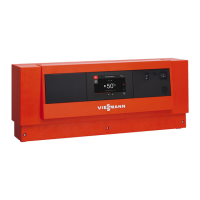

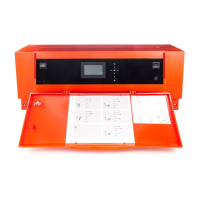
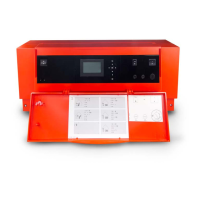


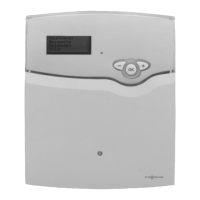

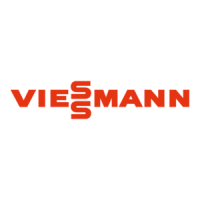

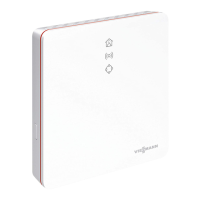
